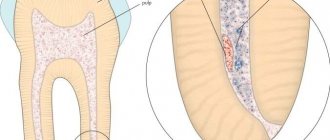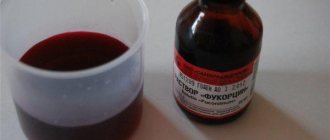Principles of treatment of community-acquired pneumonia in adults
A summary of recommendations without analysis or commentary.
Diagnostics
The diagnosis of community-acquired pneumonia is certain if the patient has radiologically confirmed focal infiltration of the lung tissue and at least two clinical signs from the following: a) acute febrile onset of the disease (T> 38.0°C); b) cough with sputum; c) physical signs (focus of crepitus and/or fine wheezing, hard/bronchial breathing, shortening of percussion sound); d) leukocytosis (>10·109/l) and/or band shift (>10%). In this case, it is necessary to take into account the possibility of known syndrome-like diseases/pathological conditions.
Gram stain and sputum culture
Routine sputum culture and Gram stain are not recommended for adult outpatients with community-acquired pneumonia.
In hospitalized patients, preliminary Gram stain and culture of airway secretions are recommended for adults with CAP that is considered severe (especially in intubated patients) or if CAP meets one of the following conditions:
- The patient is currently receiving empirical treatment for methicillin-resistant Staphylococcus aureus (MRSA) or Pseudomonas aeruginosa.
- there has been a previous infection with MRSA or P. aeruginosa, especially a respiratory tract infection.
- the patient had been hospitalized within the previous 90 days and had received parenteral antibiotics for any reason.
Blood culture
Blood cultures are not recommended in adult outpatients with CAP.
Routine blood cultures are not recommended for hospitalized adult patients with CAP.
Pre-treatment blood cultures are recommended for hospitalized adult patients with CAP that is classified as severe or who meet one of the following conditions:
- Currently undergoing empirical treatment for MRSA or P aeruginosa
- Previous history of MRSA or P aeruginosa infection, especially of the respiratory tract
- Has been hospitalized within the previous 90 days and received parenteral antibiotics for any reason.
Test for Legionella antigen and pneumococcal antigen in urine
Routine urine testing for pneumococcal antigen is not recommended in adults with CAP unless the CAP is severe.
Routine testing of urine for Legionella antigen is not recommended in adults with CAP unless CAP is severe or there is indication of predisposing epidemiological factors (eg, a Legionella outbreak or recent travel).
Testing for Legionella should consist of urinary antigen assessment and collection of lower respiratory secretions for culture on selective media or nucleic acid amplification (PCR diagnostics).
Flu testing
If influenza virus is circulating in the community, testing for influenza in adult patients with CAP is recommended.
Determination of procalcitonin
Empirical antibiotic therapy is recommended for adult patients with a clinical picture of CAP and a radiologically confirmed diagnosis of CAP, regardless of the patient's initial serum procalcitonin level.
Treatment
The decision to hospitalize
The decision to hospitalize adults with CAP should be based primarily on an assessment of the severity of the disease (preferably using the Community-Acquired Pneumonia Severity Index (PSI) for Adults scale).
Direct admission to the intensive care unit is recommended for patients with CAP who have hypotension requiring vasopressor support or respiratory failure requiring mechanical ventilation.
Outpatient antibiotic treatment regimens
Antibiotics recommended for adult patients with CAP who are otherwise healthy:
- Amoxicillin 1 g three times daily OR
- Doxycycline 100 mg twice daily OR
- In areas with <25% pneumococcal macrolide resistance: macrolide (azithromycin 500 mg on day 1 and then 250 mg daily or clarithromycin 500 mg twice daily or clarithromycin extended release 1000 mg daily)
For outpatient adults with CAP who have underlying medical conditions, the following antibiotic regimens are recommended:
- Combination therapy: Amoxicillin/clavulanate 500 mg/125 mg three times daily OR amoxicillin/clavulanate 875 mg/125 mg twice daily OR 2000 mg/125 mg twice daily OR cephalosporin (cefpodoxime 200 mg twice daily or cefuroxime 500 mg twice daily) PLUS
- Macrolide (azithromycin 500 mg on day 1, then 250 mg daily, clarithromycin [500 mg twice daily or extended release 1000 mg once daily]) or doxycycline 100 mg twice daily OR
Inpatient antibiotic treatment regimens
The following empiric treatment regimens are recommended for adult patients with non-severe CAP who do not have MRSA or P. aeruginosa risk factors:
- Combination therapy with a beta-lactam (ampicillin plus sulbactam 1.5–3 g every 6 hours, cefotaxime 1–2 g every 8 hours, ceftriaxone 1–2 g daily or ceftaroline 600 mg every 12 hours) and a macrolide (azithromycin 500 mg daily or clarithromycin 500 mg twice daily) OR
- Monotherapy with respiratory fluoroquinolone (levofloxacin 750 mg per day, moxifloxacin 400 mg per day)
The following regimens are recommended for adult patients with severe CAP without MRSA or P. aeruginosa risk factors:
- Beta-lactam plus macrolide OR
- Beta-lactam plus respiratory fluoroquinolone
The use of antibacterial drugs active against anaerobic microorganisms is not recommended for suspected aspiration pneumonia, unless a lung abscess or empyema is suspected.
Antibacterial therapy with extended-spectrum drugs for MRSA or P. aeruginosa
Empiric antibiotics active against MRSA or P. aeruginosa are recommended for adult patients with CAP only in the presence of locally documented risk factors.
Empirical treatment options for MRSA include vancomycin (15 mg/kg every 12 hours) or linezolid (600 mg every 12 hours).
Empirical treatment options for P. aeruginosa include piperacillin-tazobactam (4.5 g every 6 hours), cefepime (2 g every 8 hours), ceftazidime (2 g every 8 hours), aztreonam (2 g every 8 hours) hours), meropenem (1 g each) 8 hours) or imipenem (500 mg every 6 hours).
Empiric therapy, based on the possibility of MRSA or P. aeruginosa, continues until laboratory culture data are available.
Corticosteroid therapy
Routine administration of corticosteroids is not recommended in adult patients with CAP or severe pneumonia associated with influenza. Their use is approved in patients with refractory septic shock.
Anti-influenza therapy
Anti-influenza treatment (eg, oseltamivir) should be given to all adults with CAP who test positive for influenza.
Antibacterial therapy in patients with influenza
Standard antibacterial treatment should be initially given to adults with clinical and radiological signs of CAP who test positive for influenza.
Duration of treatment
The duration of antibiotic therapy should be based on clinical data in the form of stabilization of the patient's condition and continue for at least 5 days after clinical improvement is achieved.
Criteria for the sufficiency of antibacterial therapy for pneumonia:
- Temperature < 37.5°C
- No intoxication
- No respiratory failure (respiratory rate less than 20 per minute)
- No purulent sputum
- The number of leukocytes in the blood < 10 x 109/L, neutrophils < 80%, juvenile forms < 6%
- No negative dynamics on the radiograph.
X-ray dynamics are observed more slowly compared to the clinical picture, so control chest X-ray cannot serve as a criterion for determining the duration of antibacterial therapy.
Follow-up chest imaging
Routine follow-up testing is not recommended for adult patients with CAP whose symptoms have resolved within 5 to 7 days.
Indications for hospitalization
In accordance with modern approaches to the management of adult patients with community-acquired pneumonia, a significant number of them can be successfully treated at home. In this regard, the following indications for hospitalization are of particular importance:
- Age over 60-65 years.
- The presence of concomitant diseases (chronic bronchitis/chronic obstructive pulmonary disease, bronchiectasis, malignant neoplasms, diabetes mellitus, chronic renal failure, congestive heart failure, chronic alcoholism, drug addiction, nutritional decline, cerebrovascular diseases).
- Hospitalizations (for any reason) that occurred within the last 12 months.
- Physical examination findings: respiratory rate ≥ 30/min; diastolic blood pressure ≤ 60 mm Hg. Art. ; systolic blood pressure <90 mm Hg. Art. ; heart rate ≥ 125/min; body temperature < 35.0°C or ≥ 40.0°C; disturbances of consciousness.
- Laboratory and radiological data: peripheral blood leukocyte count <4.0·109/l or >30.0·109/l; SaO2 < 92% (according to pulse oximetry), PaO2 < 60 mm Hg. Art. and/or PaCO2 > 50 mm Hg. Art. when breathing room air; serum creatinine > 176.7 µmol/l or urea nitrogen > 7.0 mmol/l (urea nitrogen = urea, mmol/l / 2.14); pneumonic infiltration localized in more than one lobe; presence of decay cavity(s); pleural effusion; rapid progression of focal infiltrative changes in the lungs (increase in the size of infiltration > 50% over the next 2 days); hematocrit <30% or hemoglobin <90 g/l; extrapulmonary foci of infection (meningitis, septic arthritis, etc.); sepsis or multiple organ failure, manifested by metabolic acidosis (pH < 7.35), coagulopathy.
- Inability to provide adequate care and follow all medical prescriptions at home.
- Preferences of the patient and/or family members.
HOW PNEUMONIA DEVELOPES
In conditions of reduced respiratory and motor activity, when mucus moves less through the bronchi, against the background of intoxication of the body and decreased immunity, bacteria from the nasopharynx descend into the lower parts of the respiratory tract and can begin to multiply there.
Thus, bacterial bronchitis can be caused first, then bronchopneumonia with transition to pneumonia. The development of bacterial pneumonia can also be facilitated by the patient being on a ventilator for a long time. Despite compliance with all the strictest disinfection measures, ventilators are risk factors for the occurrence of ventilator-associated pneumonia.
The best broad-spectrum antibacterial drugs
New generation antimicrobial agents are usually synthesized from natural raw materials and stabilized in laboratories. This helps enhance the effect of the drug on pathogenic microflora.
What drugs are the most powerful? Doctors classify these as broad-spectrum antibacterial agents. Below is a short list of drugs by name:
- AMOXICLAV - belongs to the group of aminopenicillins. It has a mild effect and is used to treat infectious diseases. The drug can be used with caution and only after consultation with a doctor during pregnancy, as well as during breastfeeding. Available in tablets or in bulk form for oral administration, as well as in powders for injection.
- SUMAMED is a popular antimicrobial drug for the treatment of infections of the gastrointestinal tract, genitourinary system, respiratory tract diseases - sore throat, bronchitis, pneumonia. It affects the liver and kidneys, so it is not prescribed for patients with hypersensitivity to macrolides.
- CEFOPERAZONE – belongs to the group of cephalosporins. Prescribed by doctors for the treatment of urinary tract infections, prostatitis, skin disorders, and respiratory diseases. A good drug for recovery after gynecological, orthopedic and abdominal surgeries. Available in a form for parenteral administration - injection.
- UNIDOX SOLUTAB is the latest generation tetracycline. Used for extensive treatment of gastrointestinal infections, colds, prostatitis. It acts gently, without causing dysbacteriosis.
- LINCOMYCIN is a drug prescribed for the treatment of osteomyelitis, sepsis, and staphylococcal infections. It has a strong effect on pathogenic cells, therefore it has a long series of side effects. Among them are hypotension, weakness, dizziness. Do not use during pregnancy, or in patients with hepatic-renal insufficiency.
- RULID is a fourth generation macrolide. The main substance is roxithromycin. Prescribed for urogenital infections, diseases of the gastrointestinal tract and upper respiratory tract. Available in tablets.
- CEFIXIM – by name, it is a drug from the group of cephalosporins. Has a bactericidal effect on pathogenic cells. Helps with gastrointestinal infections, prostatitis, and also treats colds. It is quite toxic, so it should not be taken if you have kidney or liver problems.
- Cefotaxime is the last group of cephalosporins. The drug is indicated for the treatment of gynecological, urological, and colds. It copes well with inflammatory processes and suppresses pathogenic microflora.
Diagnostics
The doctor focuses on the patient’s complaints and the data that he sees and hears. If the doctor listens to the chest with a phonendoscope, he will hear typical wheezing, changes in breathing and so-called crepitus (the noise of a lung affected by inflammation). Bacterial pneumonia can be confirmed by:
- blood tests indicating severe inflammation (leukocytosis, changes in protein levels, clotting);
- X-ray of the chest with areas of darkness where the lung is affected;
- CT scan of the lungs, if the diagnosis is not clear on a regular x-ray;
- culture of sputum for flora with identification of a specific bacteria (or several) and determination of sensitivity to antibiotics;
- saturation (oxygen saturation in the blood) less than 95%.
Additionally, if the case is complex, the doctor may order other tests.
Modern methods of treatment
Bacterial pneumonia in mild and moderate cases can be treated at home, under the supervision of a doctor.
In severe forms - in the clinic, intensive care ward and resuscitation room. Bed rest, a light diet, and plenty of fluid intake (or intravenous administration) are indicated. The main treatment is antibiotics: the doctor selects them based on test data. Most often, penicillins, cephalosporins or macrolides are used. If these are separate forms of pneumonia, more narrowly targeted drugs are selected. Medicines are taken orally or by intramuscular injection for up to 14 days; in severe cases they are administered intravenously.
Treatment is complemented by:
- antipyretic drugs, anti-inflammatory drugs (Nurofen, Nise, Ibuklin, Rinza, Panadol);
- short course hormonal drugs;
- droppers with protein, saline solutions, vitamins and glucose;
- oxygen therapy;
- drugs for coughing up sputum (Bromhexine, ACC, Ambroxol, Fluimucil).
As the condition improves, the doctor adds breathing exercises, massages, physiotherapy, exercise therapy and subsequent rehabilitation in a sanatorium to the treatment.











